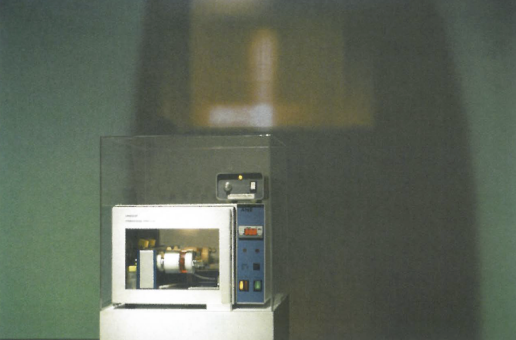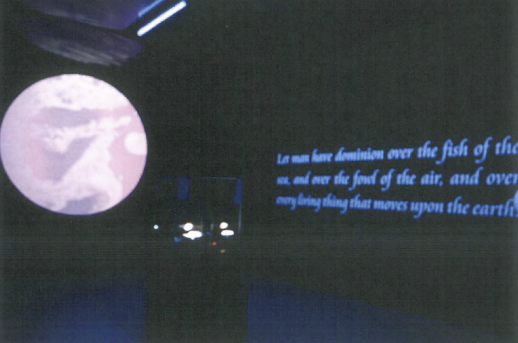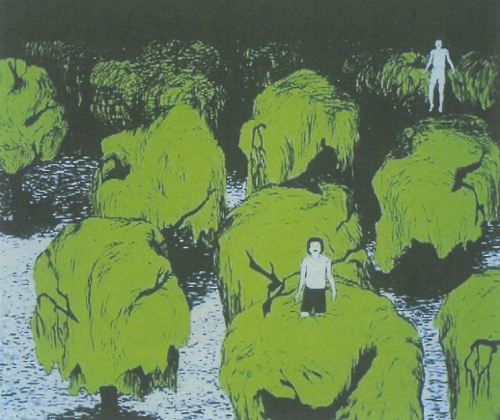
For the Adelaide Festival 2004, the Experimental Art Foundation (EAF) mounted the group exhibition Art of the Biotech Era: Art, Culture and Biotechnology, curated by EAF's Director Melentie Pandilovski. This was an appropriate show in a Festival context, featuring international artists alongside Australian practitioners as well as a workshop and symposium. Perhaps even more appropriate to the Adelaide Festival's traditional mantle of presenting innovative and challenging artworks was the nature of the exhibition itself. Featuring eleven works by artists and artist groups, the exhibition was framed within the context of the 'biotech era' and situated firmly in the spectre of current developments in biotechnology, genetic manipulation and machine/human/plant interfaces.
As Pandilovski states in his catalogue essay, '&it has become very difficult for art critics to define this newly produced work, let alone find a consensus or common ground regarding it'. This is true in that bio-art or moist art does not sit easily within a contemporary art setting. It is not bound by the aesthetics or lexicon of a more generalised art framework, indeed this emerging form of practice challenges the nature of art production and its presentation within a gallery context. This practice is at its core experimental and in a discussion with the curator, he suggests, '&some believe that these artists are the true avant garde'.
If there is a cutting-edge element to this work perhaps it is to be found in the materials that bio-artists are working with – bacteria, cells, semi-living organisms, organic matter, hybrid and mutant species. George Gessert in his The Family of 'Mark Tobey' from Origin presents a series of photographs of hybrid streptocarpuses, a genus of plants grown for their ornamental flowers. Gessert has generated over 1,800 hybrids and in the exhibition presented a small selection from the 'Mark Tobey' series. In its presentation as documentary evidence, Gessert displays a five-year project exploring the practice of genetic manipulation and the creation of hybrid plant species. It is a durational and conceptual project, which at face value appears as a genuine artistic and botanical study, but as Pandilovski remarks, '&how does the audience know that it is not a hoax?'
From this remark, can it be assumed then that an element of bio-art circumnavigates ideas of hoax, play and invention? The audience is presented with the results of experimentation and manipulation, but to what extent are we asked to fully engage or even believe what is on display? Heath Bunting's Natural Reality Superweed Kit 1.0 is the most obvious example of this. A perennial trickster, Bunting has created '&a lowtech DIY kit capable of producing a genetically mutant superweed, designed to attack corporate monoculture.' Like Gessert, but in a more blatant fashion, Bunting is using the process of genetically modified species to talk about corporate control of hybridisation and genetic mutation. The superweed created by Bunting is supposedly a weapon against genetically modified crops, resistant to herbicides with the potential to debilitate the income and profits derived by companies such as Monsanto. Presented as a humble packet of seeds in a plastic bag, is the audience witness to a new tool in bio-warfare or a handful of harmless seeds to cultivate an indoor garden? Ultimately whether the work is fact or fiction is irrelevant, as Bunting's methods are to advocate for community activism and create conceptual strategies for corporate collapse.
Another conceptual and fascinating work is Transient Patchiness presented by the Brussels based Foam (Maja Kuzmanoic and Nik Gaffney). Installed as a wall-piece collage, Transient Patchiness is a blueprint for four fields of investigation: Groworld (grow your own world), Human-Plant interface Artificial Life and Cyber-Botany. A highly creative and imaginative project, Foam is currently investigating the edges between the animal, plant and machine kingdoms. Their ethnobotanical initiative aims to generate plant/human interfaces and develop models for bio-diversity and hybrid realities, through both physical and virtual plantings and gardens.

The Semi-Living Extra Ear 1/4 Scale presented by The Tissue Culture and Art Project (Oron Catts and Ionat Zurr) in collaboration with Stelarc confronts notions of partial life and semi-living materials. The 1/4 scale replica of Stelarc's ear is grown using human cells and is cultured throughout the exhibition in a rotating micro-gravity bioreactor. The ear is also nurtured and 'kept alive' through regular 'feedings' by the artists, creating a performative and in-situ laboratory environment. This is one of Tissue Culture and Art's most successful projects to date. Simple and elegant in its realisation, it raises questions about the creation of partial life, the potential for semi-living prosthetics and the manipulation of living systems. The poignancy of the semi-living aspect of this work is realised through the ultimate killing of the ear - without the prolonged presence of the artist to sustain the prosthetic, it is terminated, bioreactor removed and left as a non-living artefact of a potential extra body part.
Transgenic artworks also had a significant presence in Art of the Biotech Era. Eduardo Kac's well known work Genesis was presented for the first time in Australia and will be followed by Kac undertaking an artist-in-residence at the EAF within the coming months. Australian artist Andrew Brodyk presented glo©k gene, comprised of E-coli bacteria transformed with encoded genetic material. Brodyk is attempting to create a new fine art form, by 'drawing' the bacteria into figurative patterns and shapes. Like the Extra Ear 1/4 Scale, the life span of these organisms is temporary, comprised of living and non-living components which deteriorate through the duration of the exhibition.
The concept and rationale underpinning such works as glo©k gene only become fully understood through the accompanying room notes. As in most of the works in the exhibition, the processes and outcomes are articulated through these notes and form an essential component of the exhibition. It is a challenge for artists working in this area to create accessible works that do not rely so heavily on background material. One of the few works that does achieve this is kuh by Berlin-based Michalis Pichler. Presented in Art of the Biotech Era as fragments of the entire work, through photographic documentation and the foam sculpture of a cow, this work explores '&the question of postmortal dignity'. The complete work involves Pichalis sewing the tanned hide of a cow around the polystyrene structure. Pichalis will return to Adelaide later in 2004 to finish his cow (modelled on Australian Friesians) and as in previous German incarnations, place it in unsuspecting public spaces. Hoax, public spectacle or bio-art in action, kuh will certainly place art of the biotech era firmly on the streets of Adelaide.












